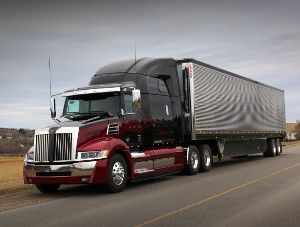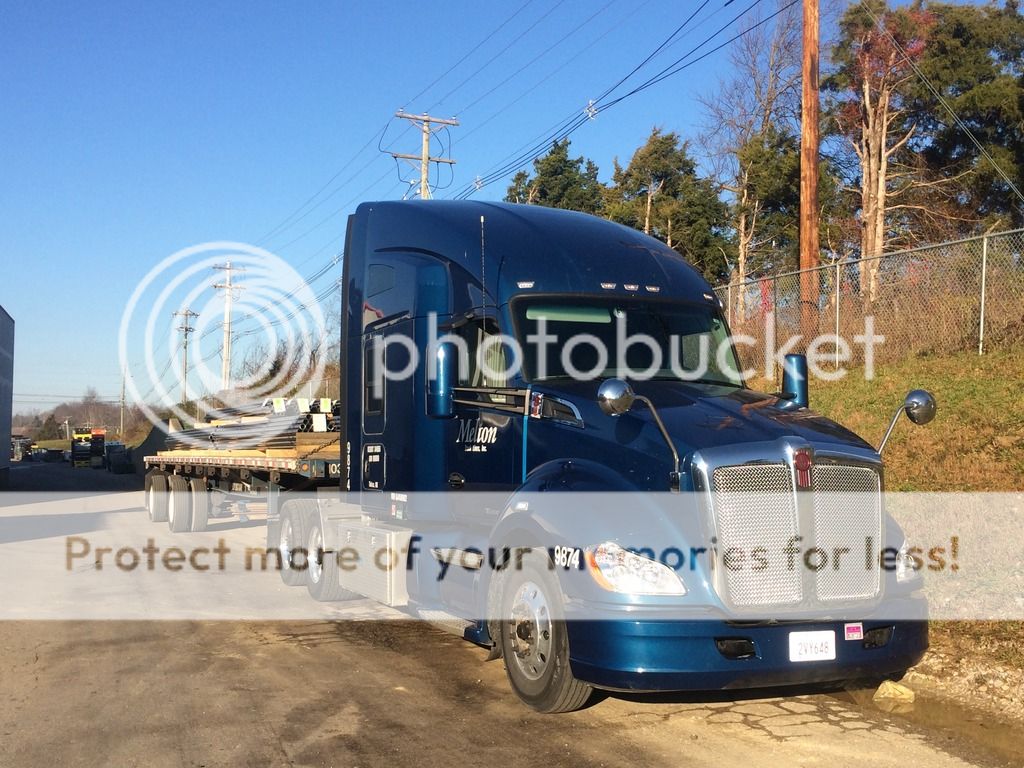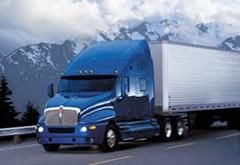Questions About Flatbed
Topic 11917 | Page 1
I am finally going after my dream of pullin flat bed and not dry van or reefer and had the enjoyment of talking with one who was telling me about how heavy the tarps can be and basically starting giving directions of how to tarp the load, folding corners and such. This went on for about three hours and also gave me a load securement book and suggested another. To my surprise when asking about weight distribution and mentioned 34k on the drives and was informed that you better check your trailer axles because your over? So how do you distribute the weight with a spread axle trailer? Secondly, when it comes to lifting the lumber tarps, I have been reading and hearing there is a proper technique that makes lifting those heavy things a piece of cake.
Im not sure how a spread axle works. But as for tarping. I found this on YouTube. It has multiple parts to it. Tarping
I'm sure one of the more experienced flat bedders could weigh in more.
Dry Van:
A trailer or truck that that requires no special attention, such as refrigeration, that hauls regular palletted, boxed, or floor-loaded freight. The most common type of trailer in trucking.Reefer:
A refrigerated trailer.
HOS:
Hours Of Service
HOS refers to the logbook hours of service regulations.
You'll be relieved to find out a spread axle is the best thing to happen for the life of a trucker. Just balance your weight towards the back and as long as you aren't over gross you'll be fine because the spread axle can handle 20k per axle, so you're allowed to have 40k on the back. You can see this makes it much easier to balance the weight because there's no moving tandems or perfect balance required, just toss the weight back a few inches and everythings cake. Lifting the lumber tarp is basically the exact process for lifting a person. The exact method will vary a bit by person, but the key points are, get it as close to your center of gravity as possible, get a good wrap around it with one arm, and get the other hand under it really securely, then lift solely with the strength of your legs with your arms only serving the purpose of holding it to your body until you can put momentum into it and heave it up onto your shoulder.
Tandems:
Tandem Axles
A set of axles spaced close together, legally defined as more than 40 and less than 96 inches apart by the USDOT. Drivers tend to refer to the tandem axles on their trailer as just "tandems". You might hear a driver say, "I'm 400 pounds overweight on my tandems", referring to his trailer tandems, not his tractor tandems. Tractor tandems are generally just referred to as "drives" which is short for "drive axles".
Tandem:
Tandem Axles
A set of axles spaced close together, legally defined as more than 40 and less than 96 inches apart by the USDOT. Drivers tend to refer to the tandem axles on their trailer as just "tandems". You might hear a driver say, "I'm 400 pounds overweight on my tandems", referring to his trailer tandems, not his tractor tandems. Tractor tandems are generally just referred to as "drives" which is short for "drive axles".

Also there may be times during the winter when the tarp is so large due to ice and inflexibility that you will require assistance from a forklift driver or have to do really weird things to get it to where it needs to be stored.

Thank you for the replies, I had been looking on youtube as well and couldn't find anything showing what technique was used they just always appeared with the tarp already in place laying in front of them.
OWI:
Operating While Intoxicated

Like James said, get it close to your body and lift with your legs. If you have to step it up. Get up to the tire or catwalk. Then heave it up to the trailer. Most places the forklift guy/gal is more than willing to set it up top. Especially on tall loads.
Just learn to fold the tarp properly so that when you roll it out the flap is where it should be and the tarp is fairly close to center. Saves a lot of aggravation.

I got a flatbed job a few months ago and have found that I enjoy the challenges of having to solve securement and tarping puzzles. Sticking to the basics is the best way: prevent any movement both horizontally and vertically. I've had loads where I strapped and chained, then added dunnage with more chains for bracing and blocking. Others have made me quickly learn the science of aerodynamics to protect my tarps on the load. You gotta tarp from back to front, but some loads are oddly shaped and you will get creative trying to design a way that prevents air from getting inside those tarps. Where air gets in, water gets in. I use a ladder if I really need to get up to the top, and always use the tarp machine at a shipper. Most guys talk tough about how lame that is. Breaking bones or getting killed is pretty lame though. I've seen guys slide off of the top and luckily they were in a harness on a tarp machine and only injured their pride and racked their eggs. Just be open to ideas that get the load secured and protected, and you'll soon know how to strap down a house in a hurricane.
Shipper:
The customer who is shipping the freight. This is where the driver will pick up a load and then deliver it to the receiver or consignee.
HOS:
Hours Of Service
HOS refers to the logbook hours of service regulations.
First thing to remember is, DON'T EVER let anyone rush you. When you let yourself get rushed, things like this can happen.
You can also get some short pieces of rope and tie it around the tarps and then pick it up like you would a hay bale. But then I don't use tarps. Or even better yet, those short cam buckle straps would work great for this.
HOS:
Hours Of Service
HOS refers to the logbook hours of service regulations.
First thing to remember is, DON'T EVER let anyone rush you. When you let yourself get rushed, things like this can happen.
You can also get some short pieces of rope and tie it around the tarps and then pick it up like you would a hay bale. But then I don't use tarps. Or even better yet, those short cam buckle straps would work great for this.
 Image didn't work for me, that is why i quote boxed it, to see if it worked that way.
Image didn't work for me, that is why i quote boxed it, to see if it worked that way. 
HOS:
Hours Of Service
HOS refers to the logbook hours of service regulations.
Thank you for the replies, I can't see the photo either, and on the upside I did get my pre hire also are there anythings that the company does not supply, but help you with securement or after you get unloaded that they recommend you get?
Pre Hire:
What Exactly Is A Pre-Hire Letter?
Pre-hire letters are acceptance letters from trucking companies to students, or even potential students, to verify placement. The trucking companies are saying in writing that the student, or potential student, appears to meet the company's minimum hiring requirements and is welcome to attend their orientation at the company’s expense once he or she graduates from truck driving school and has their CDL in hand.
We have an excellent article that will help you Understand The Pre-Hire Process.
A Pre-Hire Letter Is Not A Guarantee Of Employment
The people that receive a pre-hire letter are people who meet the company's minimum hiring requirements, but it is not an employment contract. It is an invitation to orientation, and the orientation itself is a prerequisite to employment.
During the orientation you will get a physical, drug screen, and background check done. These and other qualifications must be met before someone in orientation is officially hired.
New Reply:
New! Check out our help videos for a better understanding of our forum features

















Preview:








 TT On Facebook
TT On Facebook
I am finally going after my dream of pullin flat bed and not dry van or reefer and had the enjoyment of talking with one who was telling me about how heavy the tarps can be and basically starting giving directions of how to tarp the load, folding corners and such. This went on for about three hours and also gave me a load securement book and suggested another. To my surprise when asking about weight distribution and mentioned 34k on the drives and was informed that you better check your trailer axles because your over? So how do you distribute the weight with a spread axle trailer? Secondly, when it comes to lifting the lumber tarps, I have been reading and hearing there is a proper technique that makes lifting those heavy things a piece of cake.
Dry Van:
A trailer or truck that that requires no special attention, such as refrigeration, that hauls regular palletted, boxed, or floor-loaded freight. The most common type of trailer in trucking.Reefer:
A refrigerated trailer.
HOS:
Hours Of Service
HOS refers to the logbook hours of service regulations.